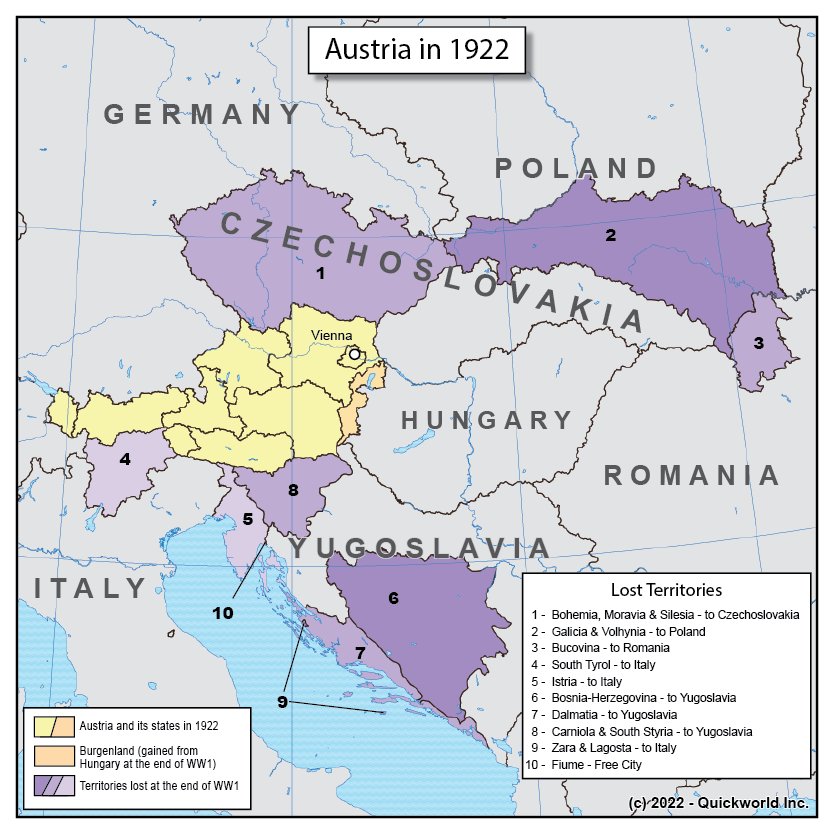Our Series on World War One focuses on Austria, one of the major central powers involved in the War, and particularly on its territorial evolution after the War.
The Austro-Hungarian Empire was a confederation of two monarchies, and the post-War treaties of the Paris conference dealt with those entities independently. The lands that were directly under the control of the Austrian Emperor, known as the Crown Lands, were subject to intense territorial negotiation that resulted in the Treaty of Saint-Germain in 1919.
In this treaty, the Crown lands were split among 6 countries, two of which, Czechoslovakia and Yugoslavia, were post-War creations. Romania, Italy and Poland also received significant territories from Austria. What was left, the predominantly German speaking areas, was granted status as the new nation of Austria. Any mention of German Austria or merger with the new German Republic were forbidden by this treaty.
The new country was neither geographically nor culturally homogeneous, in particular the Westernmost region of Vorarlberg had much closer ties with Switzerland than with the rest of Austria. The local population voted in a referendum on seceding from Austria, but this was not recognized and they rejoined the country. In the East, some regions of Hungary that were predominantly German-speaking opted to join Austria instead of Hungary.
Austria would only exist for 19 years before being absorbed by Nazi Germany in the infamous 1938 Anschluss. It would regain its original borders after the war, following a 10-year period of multi-national administration.
Austria's WW1 Territorial Losses


